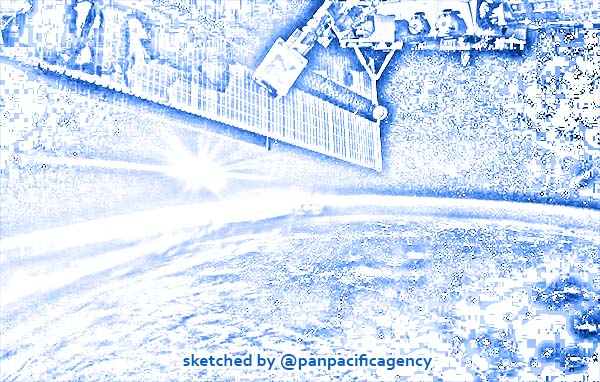US, Japanese astronauts arrive at ISS in SpaceX ship

A handout picture made available by NASA and taken by US astronaut Scott Kelly from the International Space Station (ISS) on 07 October 2015 shows an aurora looming over Planet Earth. The Aurora Borealis, or Nothern Lights, have been visible this week. EPA/SCOTT KELLY / NASA. Sketched by the Pan Pacific Agency.
CAPE CANAVERAL, Nov 17, 2020, Kyodo. The commercially developed SpaceX Crew Dragon ship carrying a group of four U.S. and Japanese astronauts successfully docked with the International Space Station on Monday following its liftoff from NASA’s space center a day earlier, Kyodo News reported.
Three NASA astronauts — Michael Hopkins, Victor Glover and Shannon Walker — along with Soichi Noguchi of the Japan Aerospace Exploration Agency will begin a six-month mission at the orbiting laboratory.
The second manned flight to the ISS by the Crew Dragon capsule, developed by the U.S. company Space Exploration Technologies Corp., followed a test flight earlier this year with two NASA astronauts.
Noguchi, 55, became the first non-American astronaut to be ferried by NASA’s first-ever certified commercial human spacecraft system.
Seats in the Soyuz have cost NASA around $80 million or more each in recent years, according to a 2019 report by the U.S. space agency’s Office of Inspector General. The National Aeronautics and Space Administration hopes to reduce crew transportation costs through commercial systems developed in the United States.
The latest development is welcome news for Japan, which also has had to rely on the Soyuz vehicle to send its astronauts to the ISS.
Noguchi is a veteran astronaut with experience from two previous space missions, having been aboard the Space Shuttle Discovery in 2005 and a Russian Soyuz spacecraft for a 161-day stay on the ISS between 2009 and 2010.
During his present stay on the ISS through April, Noguchi is expected to carry out experiments involving iPS cells, or induced pluripotent stem cells, that can be converted into any type of cell in the body, according to JAXA.
NASA officials have highlighted the importance of sending more astronauts to the ISS, which increases the capacity for scientific research in space.
The arrival of the four astronauts raises the total number of crew members aboard the ISS to seven. Permanent human occupancy of the station began in November 2000.